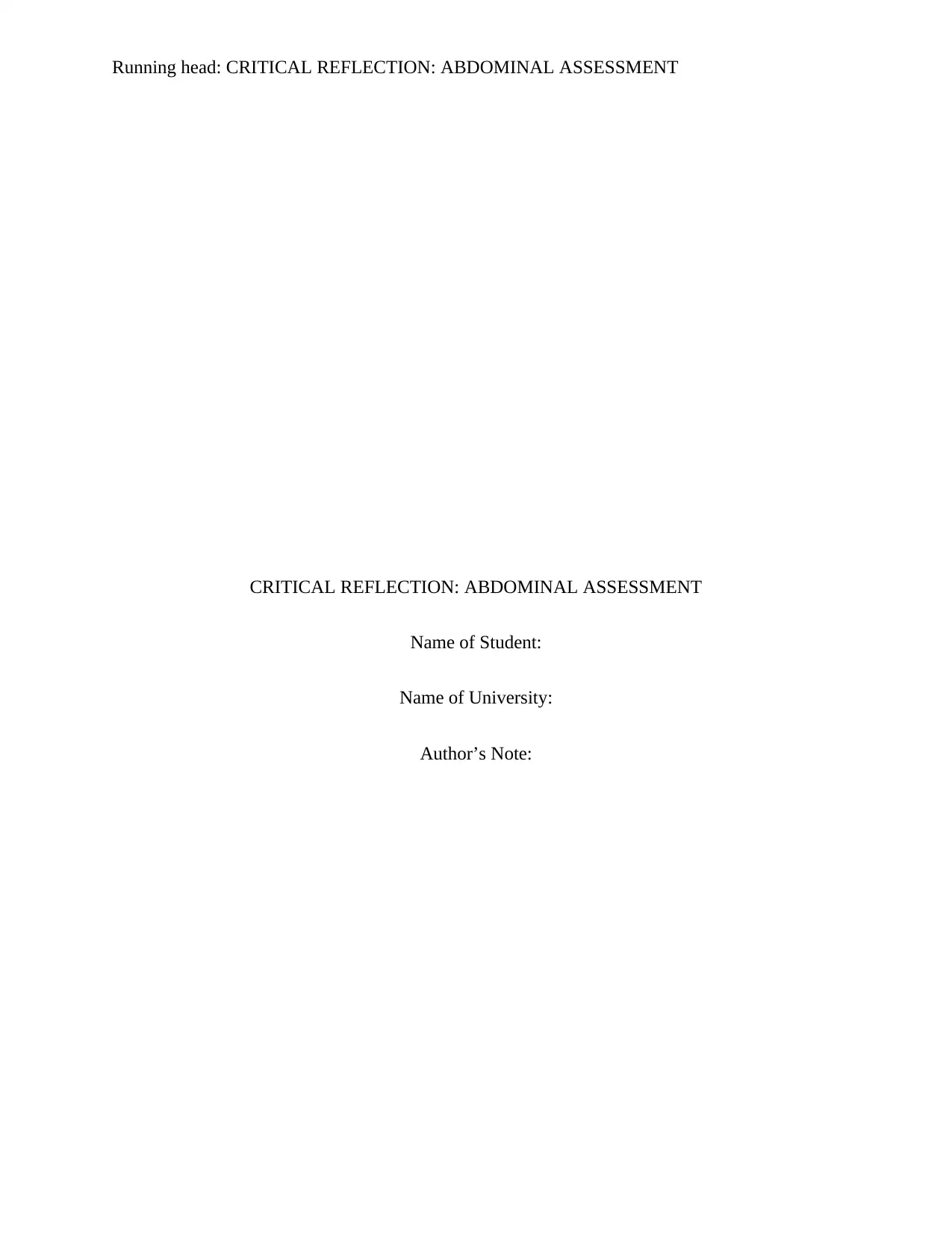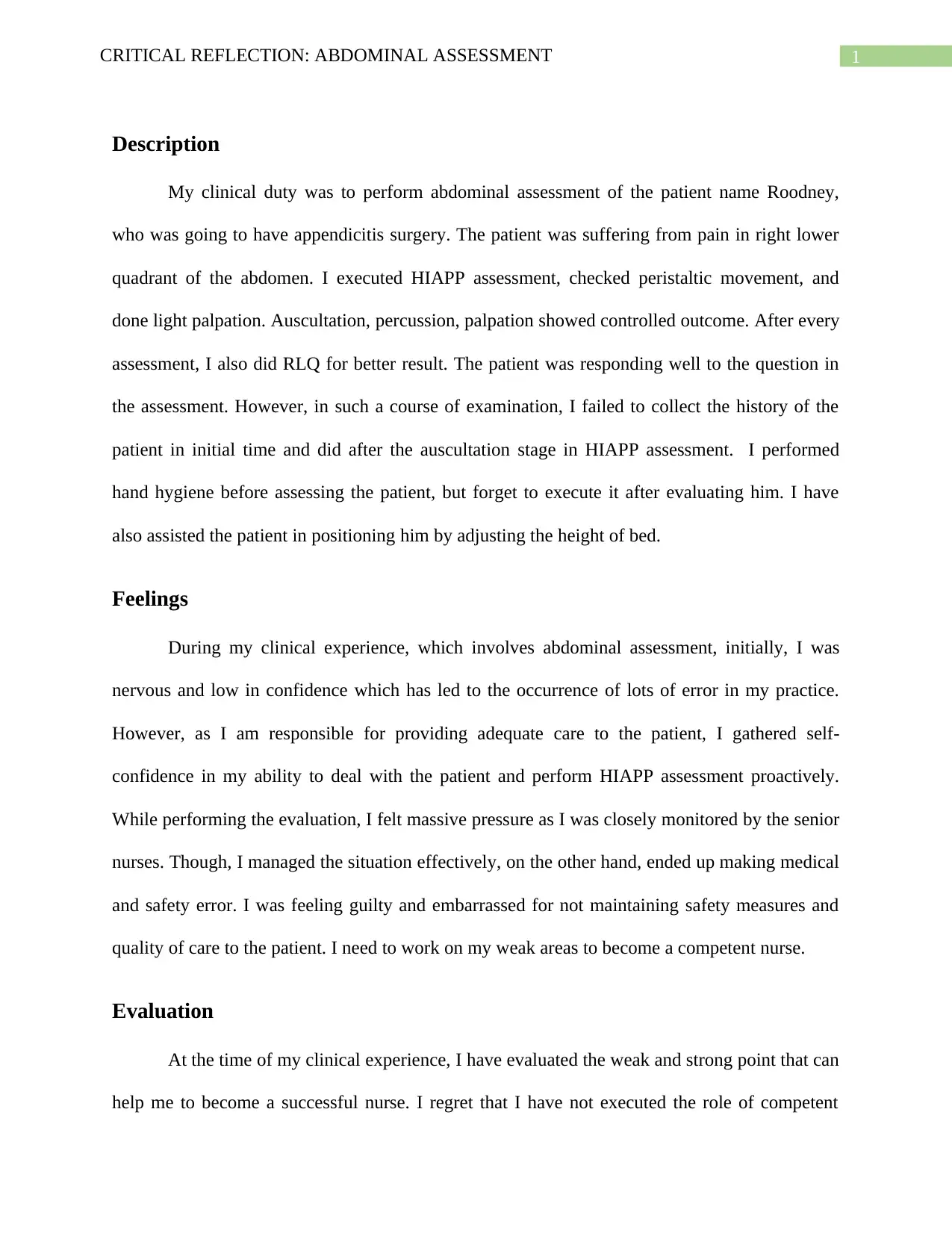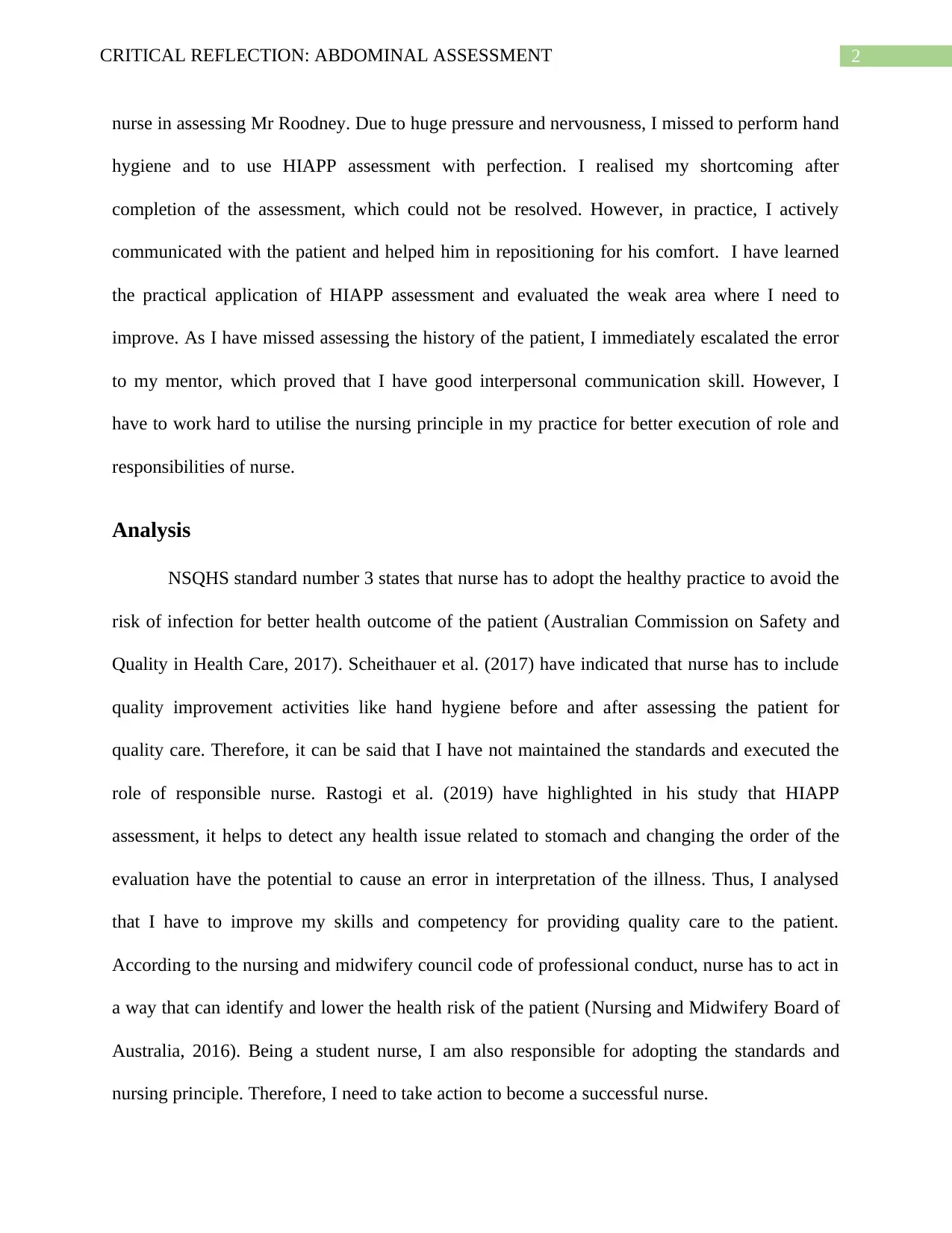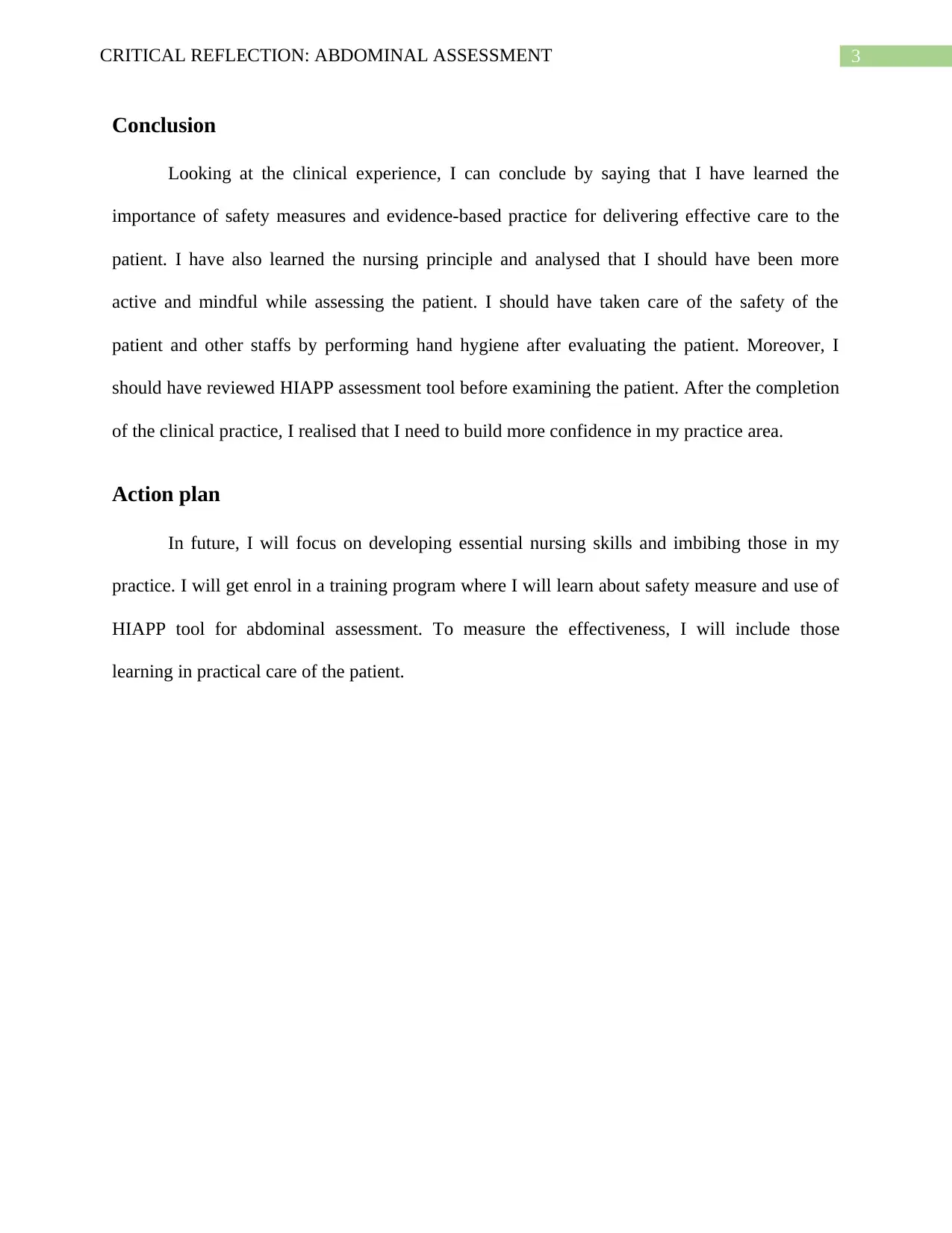University Nursing: Critical Reflection on Abdominal Assessment
VerifiedAdded on 2022/11/01
|5
|1069
|442
Journal and Reflective Writing
AI Summary
This document presents a critical reflection by a nursing student on their experience performing an abdominal assessment on a patient. The reflection details the student's actions, feelings, and evaluation of the assessment process, including the use of HIAPP (History, Inspection, Auscultation, Percussion, Palpation) and hand hygiene practices. The student discusses initial nervousness, errors made (such as forgetting hand hygiene and the order of assessment), and feelings of guilt and embarrassment. The reflection incorporates relevant NSQHS standards and the Nursing and Midwifery Board of Australia's code of conduct to analyze the student's shortcomings. It also highlights the student's strengths, such as effective communication with the patient and escalation of errors to a mentor. The conclusion emphasizes the importance of safety measures, evidence-based practice, and building confidence. The student outlines a future action plan focused on skill development through training programs and practical application of learned techniques. The reflection offers insights into the practical application of nursing principles in clinical settings and serves as a learning tool for nursing students.
1 out of 5












![[object Object]](/_next/static/media/star-bottom.7253800d.svg)